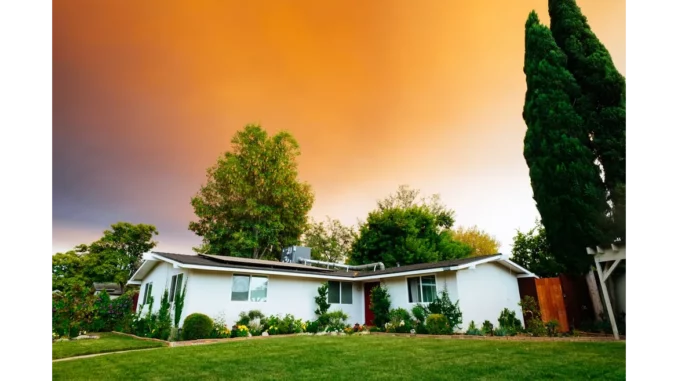
In the realm of real estate, an understated yet transformative revolution is underway: the ascent of green real estate. As environmental concerns escalate, the industry is increasingly pivoting towards sustainable development and building practices designed to minimise carbon footprints and enhance energy efficiency. Beyond their environmental merits, these green initiatives represent astute business strategies that deliver measurable financial benefits.
Focus360 Energy: property compliance services – pre-planning to post-construction. Learn more.
The emphasis on sustainability within the real estate sector extends far beyond the mere use of eco-friendly materials. It embodies a comprehensive approach to constructing and managing properties, considering their environmental impact throughout their entire lifecycle. This shift is gaining traction, fuelled by heightened public awareness of climate issues, supportive governmental policies, and the clear economic advantages associated with green buildings.
The International Energy Agency (IEA) has underscored the critical role buildings play in achieving global energy efficiency objectives. Meanwhile, initiatives such as the European Union’s Energy Performance of Buildings Directive aim to enhance property energy efficiency across the continent. These policies advocate the construction of structures that not only reduce greenhouse gas emissions but also conserve resources. The real estate industry, once dominated by traditional building practices, is now witnessing a surge in the demand for green buildings across various market segments, from commercial skyscrapers to residential homes. The LEED Certification system, for instance, exemplifies how sustainability is being benchmarked within the industry.
One of the most immediate and tangible benefits of green real estate is the reduction in operational costs. Green buildings are engineered to use resources like energy and water more efficiently, resulting in substantial savings. The U.S. Green Building Council reports that LEED-certified buildings can achieve an average 20% reduction in operational costs compared to conventional buildings. This efficiency is achieved through the incorporation of energy-efficient appliances, high-performance windows and insulation, and the integration of renewable energy sources. Additionally, advanced water systems and fixtures can significantly cut water usage, lowering utility bills. The use of durable, sustainable materials further reduces maintenance costs over time, adding to the financial appeal.
Green real estate also tends to command higher property values. Properties equipped with sustainable features often attract a premium in the market, as buyers and tenants increasingly seek environmentally friendly and cost-efficient living spaces. Research from the Green Building Council of Australia indicates that green, energy-efficient buildings generally achieve higher sale prices and rental rates. Furthermore, green buildings often enjoy higher occupancy rates due to their appeal, which includes health and wellness benefits such as improved indoor air quality and natural lighting. These features are becoming increasingly desirable among tenants, contributing to the overall value proposition of green properties.
Investing in green real estate can yield significant returns on investment. Sustainable buildings typically attract tenants more quickly, experience shorter vacancy periods, and command higher rents, all of which contribute to a robust and stable cash flow. Additionally, regulatory frameworks frequently offer incentives for green developments, such as tax credits, rebates, and zoning allowances, which can further enhance the financial returns of these investments.
However, the widespread adoption of green real estate faces certain challenges. The most prominent barrier is the higher initial costs associated with green construction. Sustainable materials and technologies can be more expensive, and the upfront investment can be a deterrent for some developers and investors. Additionally, there is often a lack of awareness or understanding of the benefits that green buildings can provide, leading to scepticism or reluctance to invest in sustainable practices.
Nevertheless, these challenges are surmountable. Financial institutions are increasingly offering green financing options, making it easier for developers to fund sustainable projects. Education and training programmes are also becoming more prevalent, equipping industry professionals with the knowledge and skills needed to build and manage green properties effectively.
Looking to the future, green real estate is poised to become the standard rather than the exception. As the world grapples with the pressing realities of climate change and resource scarcity, the real estate sector has a critical role to play in adapting to these challenges. The continued growth of green real estate is driven by consumer demand, regulatory pressures, and the undeniable economic benefits that these properties offer.
For stakeholders within the industry, embracing sustainability is not merely an ethical choice but a strategic imperative that will shape future success. Transitioning to sustainable practices presents an opportunity for innovation, differentiation, and competitive advantage. The evidence is compelling: real estate developers, investors, and consumers must prioritise green real estate. Sustainability is not just a virtue; it is a value proposition that blends ethical foresight with economic prudence.
VertPro.com exemplifies a resourceful platform aiding property owners and managers in enhancing their buildings’ energy efficiency. Offering services such as Commercial Energy Audits, Benchmark Compliance consultancy, and a Construction Marketplace, VertPro® provides a suite of SaaS technology-based solutions to navigate the complexities of Energy Benchmarking and Energy Audits/RCx Plus. By ensuring adherence to over 60 Energy Benchmarking and Energy Efficiency Laws across the country, VertPro.com empowers building owners and property managers to make informed decisions regarding their energy strategies, thereby improving operational value and complying with all relevant energy ordinances and laws.


Be the first to comment